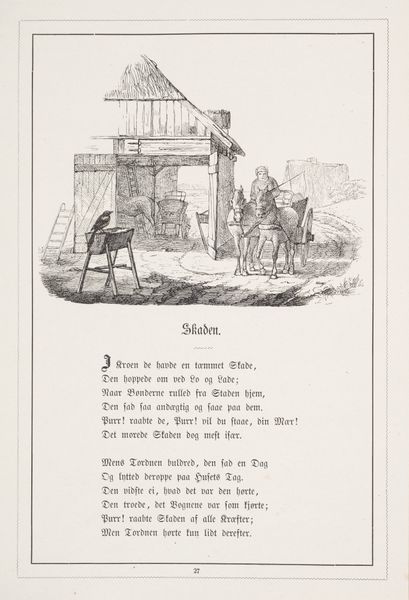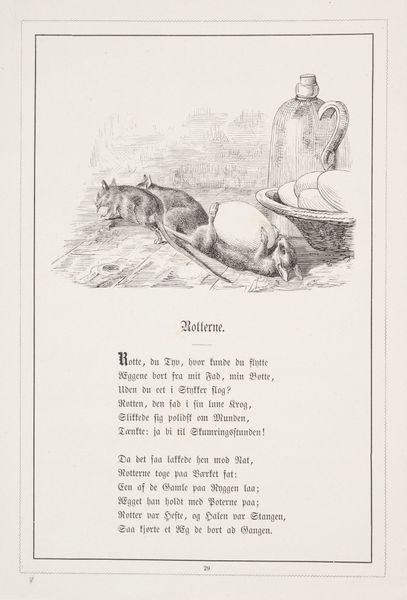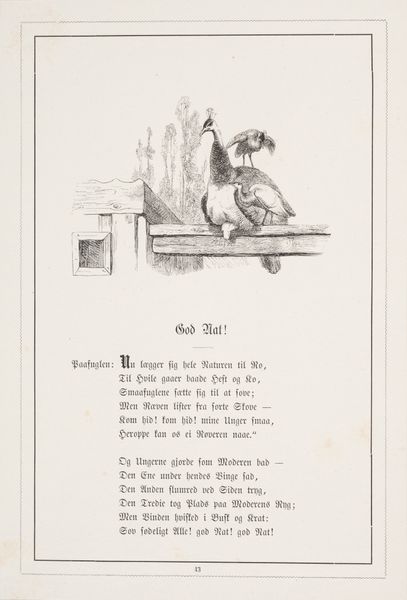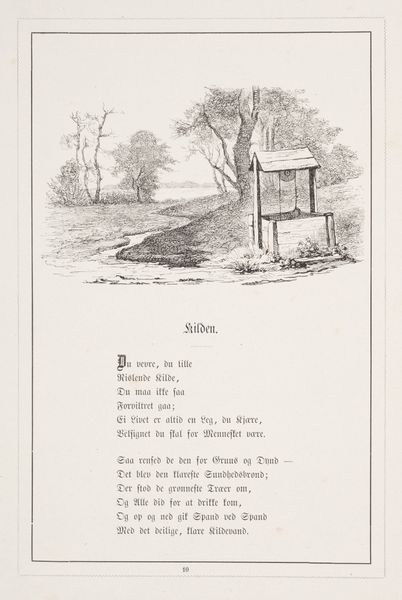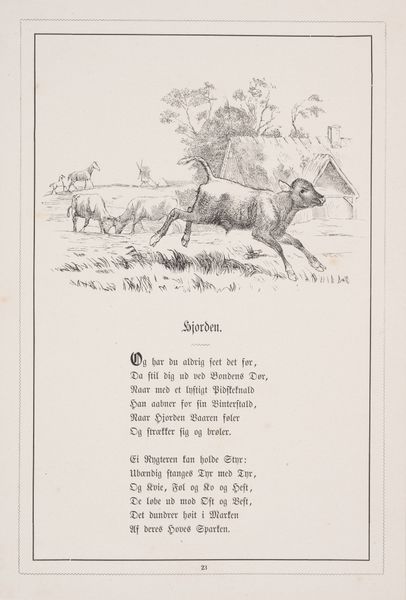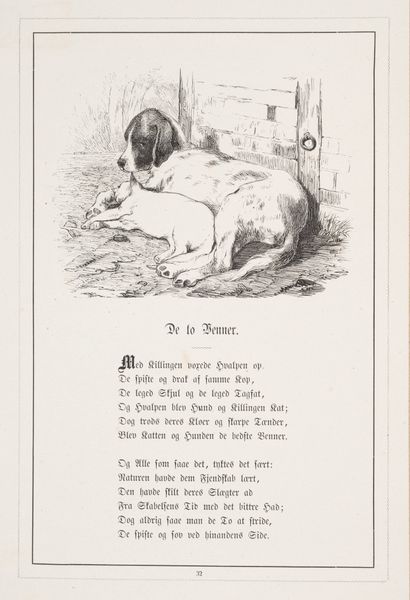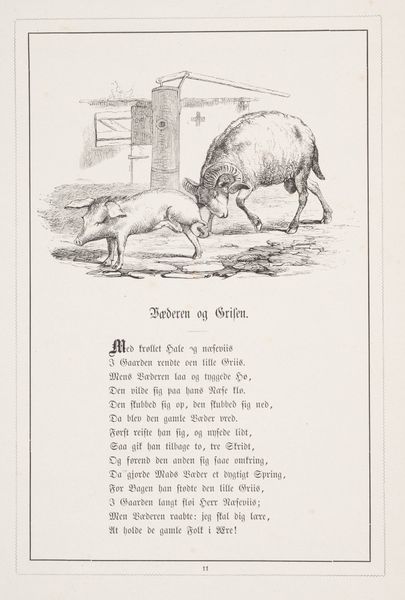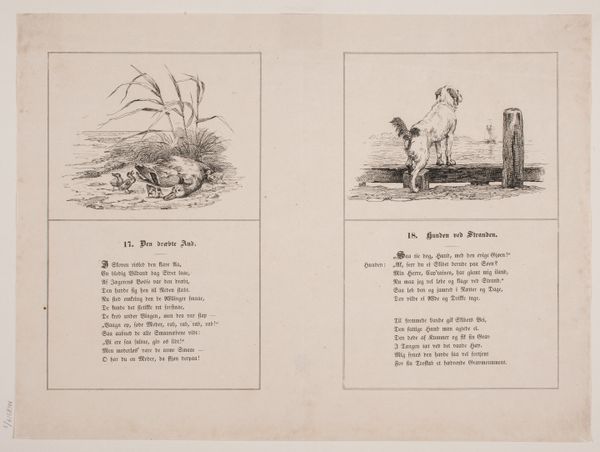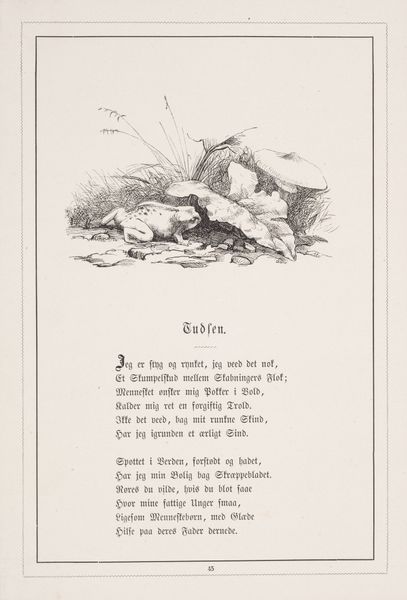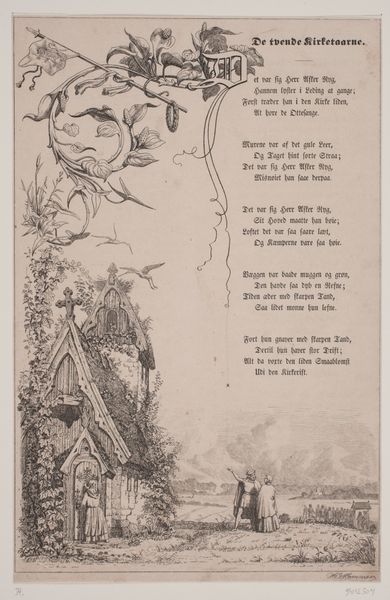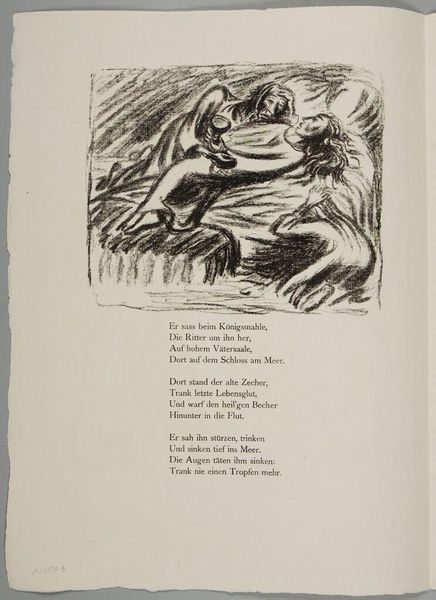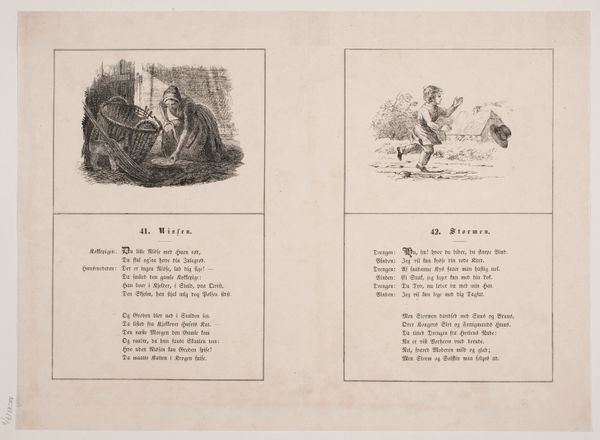
Hønsene og Ænderne. Illustration til H.V. Kaalund, "Fabler for Børn" 1866
0:00
0:00
Dimensions: 220 mm (height) x 147 mm (width) (bladmaal)
Curator: Here we have H.P. Hansen's 1866 engraving, "Hønsene og Ænderne. Illustration til H.V. Kaalund, Fabler for Børn," or "The Hens and the Ducks: Illustration for H.V. Kaalund's Fables for Children," currently housed in the Statens Museum for Kunst. Editor: Immediately, the sense of enclosure and quiet strikes me. There’s a storm gathering in the poem below, yet the image itself feels like a retreat, a contained haven. Curator: Note how Hansen utilizes the engraving technique, particularly the dense cross-hatching to suggest the texture of the stone wall and the birds' plumage. There's a conscious decision to highlight the physical barrier between the haven of protection versus the tempest brewing on the outside, creating two separate but distinct domains of being. It speaks to the primal need to discover symbols of shelter in a hostile climate, physically or spiritually. Editor: Absolutely. I see a commentary on societal structures and the unequal distribution of comfort and safety, then and now. The poem discusses differing animal natures—ducks relish water, chickens seek shelter. One might interpret this as an allegory for different social classes or even races, with some naturally benefiting while others seek protection, perhaps even based on externally assigned qualities. Who gets to thrive openly, and who needs to seek cover? The wall, built of brick and intention, is the barrier reinforcing the structure and system of oppression and safety, for some but not all. Curator: But within the fable tradition, the animals can also be seen as representative psychological types as well: the chicken that shrinks and is nervous, versus the duck that takes life in stride. What does it mean that both approaches might have relevance depending on the context? Editor: That tension is key. By including the poem itself, which appears directly beneath the image, Hansen provides an avenue for a nuanced reading. It invites viewers to confront uncomfortable truths and consider their own relationship to vulnerability, comfort, and perhaps even resistance. It isn't necessarily as simplistic as one side seeking shelter and the other thriving. Instead, the question it provokes may challenge who thrives on and profits from another's vulnerabilities. Curator: Seeing it that way brings the fable into sharper focus. The shelter then is less about physical safety, but the creation of such safety on someone else's expense. Editor: Exactly. By situating it in the realm of childhood education—fables meant to instill moral values—it implicitly asks us to grapple with these uncomfortable aspects and assumptions inherent to the romantic sensibility that often veil unequal power structures.
Comments
No comments
Be the first to comment and join the conversation on the ultimate creative platform.
